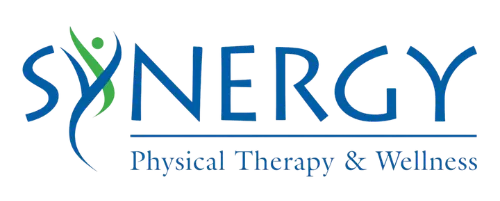Red light therapy, technically known as photobiomodulation (PBM), uses red or near-infrared (NIR) light to heal and regenerate damaged muscle tissue. While “red light therapy” is commonly used, PBM is the more precise term for this advanced treatment. It can be applied before exercise for pre-conditioning or afterward to enhance athletic performance and speed up recovery.
How Red Light Therapy (PBM) Works
Red light therapy boosts muscle recovery by increasing energy production at the cellular level. It stimulates the mitochondria — the cell’s center for energy production — leading to higher levels of ATP, the energy muscles need for movement. This extra energy allows muscles to work harder, recover faster, and reduces inflammation and oxidative stress.
Benefits for Athletes
Studies show that PBM can:
- Increase muscle mass after training
- Reduce muscle soreness and inflammation, including delayed onset muscle soreness (DOMS)
- Boost muscle performance, allowing athletes to do more reps and experience less fatigue
- Decrease muscle damage, as indicated by lower levels of creatine kinase (CK), a marker of muscle injury
How Red Light Therapy (PBM) is Used
Red light therapy can be applied using lasers or LED lights, targeting specific muscles. Depending on the recovery needed, red light, NIR light, or a combination of both is used. This technology is gaining popularity among professional and amateur athletes alike.
Red Light Therapy (PBM) in Sports Performance and Recovery: Study Highlights
Research shows that red light therapy (PBM) enhances muscle performance and recovery. While results vary in some cases, many studies have demonstrated positive effects. Below are key findings from several clinical trials:
- Increased Muscle Strength and Recovery — (Ferraresi et al., 2011): A clinical trial found that PBM applied after strength training significantly increased lifting capacity and improved knee extensor peak torque. The PBM group outperformed both the control and training-only groups in muscle strength gains.
- Reduced Muscle Fatigue — (Leal et al, 2010): PBM applied after moderate training reduced muscle fatigue in knee extensors, suggesting that it can help muscles resist fatigue, especially when paired with regular exercise.
- Enhanced Muscle Hypertrophy and Reduced Damage — (Ferrerasi et al., 2011): A placebo-controlled study on twins found that PBM applied after training promoted muscle hypertrophy, improved gene expression for muscle growth, and reduced markers of muscle damage (creatine kinase) and inflammation.
- Improved Muscle Power and Torque — (Baroni et al., 2010): When used as pre-conditioning before eccentric training, PBM improved muscle thickness and peak torque, showing its ability to enhance both strength and muscle size.
- Benefits for Elderly Populations — Toma et al. (Ferrerasi, 2012): PBM combined with strength training increased peak torque and work output in elderly women, making it a promising tool for improving muscle power in aging populations.
- PBM as a Pre-Conditioning and Post-Exercise Tool — (Baroni et al., 2010): PBM applied before strength training increased peak torque and 1-rep max strength in leg exercises, though using it both before and after exercise did not lead to additional benefits.
In Summary:
Red light therapy (PBM) is emerging as a powerful tool in sports medicine, aiding athletes and active individuals in faster recovery, injury prevention, and performance enhancement.
Now at Synergy Physical Therapy and Wellness!
Synergy Physical Therapy and Wellness is thrilled to offer red light therapy (PBM), giving athletes and fitness enthusiasts access to this revolutionary recovery tool. Whether you’re recovering from tough training sessions or aiming to enhance your performance, PBM therapy can make a significant difference in your routine.
Visit Synergy Physical Therapy and Wellness today to see how PBM can help you achieve your fitness and recovery goals!
Sources:
Baroni BM, Leal EC Jr, De Marchi T, Lopes AL, Salvador M, Vaz MA. Low level laser therapy before eccentric exercise reduces muscle damage markers in humans. Eur J Appl Physiol. 2010;110(4):789–796. doi: 10.1007/s00421-010-1562-z.
Craig JA, Barlas P, Baxter GD, Walsh DM, Allen JM. Delayed-onset muscle soreness: lack of effect of combined phototherapy/low-intensity laser therapy at low pulse repetition rates. J Clin Laser Med Surg. 1996;14(6):375–380. Doi: 10.1089/clm.1996.14.375.
Dos Santos Maciel T, Munoz IS, Nicolau RA, Nogueira DV, Hauck LA, Osorio RA, de Paula AR Jr. Phototherapy effect on the muscular activity of regular physical activity practitioners. Lasers Med Sci. 2014;29(3):1145–1152. doi: 10.100
Douris P, Southard V, Ferrigi R, Grauer J, Katz D, Nascimento C, Podbielski P. Effect of phototherapy on delayed onset muscle soreness. Photomed Laser Surg. 2006;24(3):377–382. doi: 10.1089/pho.2006.24.377.
Felismino AS, Costa EC, Aoki MS, Ferraresi C, de Araujo Moura Lemos TM, de Brito Vieira WH. Effect of low-level laser therapy (808 nm) on markers of muscle damage: a randomized double-blind placebo-controlled trial. Lasers Med Sci. 2014;29(3):933–938. doi: 10.1007/s10103-013-1430-2.
Ferraresi C, de Brito Oliveira T, de Oliveira Zafalon L, de Menezes Reiff RB, Baldissera V, de Andrade Perez SE, Matheucci E Jr, Parizotto NA. Effects of low level laser therapy (808 nm) on physical strength training in humans. Lasers Med Sci. 2011;26(3):349–358. doi: 10.1007/s10103-010-0855-0.
Ferraresi C, Hamblin MR, Parizotto NA. Low-level laser (light) therapy (LLLT) on muscle tissue: performance, fatigue and repair benefited by the power of light. Photonics Lasers Med. 2012;1(4):267–286. doi: 10.1515/plm-2012-0032.
Leal EC Jr, Lopes-Martins RA, de Almeida P, Ramos L, Iversen VV, Bjordal JM. Effect of low-level laser therapy (GaAs 904 nm) in skeletal muscle fatigue and biochemical markers of muscle damage in rats. Eur J Appl Physiol. 2010;108(6):1083–1088. doi: 10.1007/s00421-009-1321-1.
